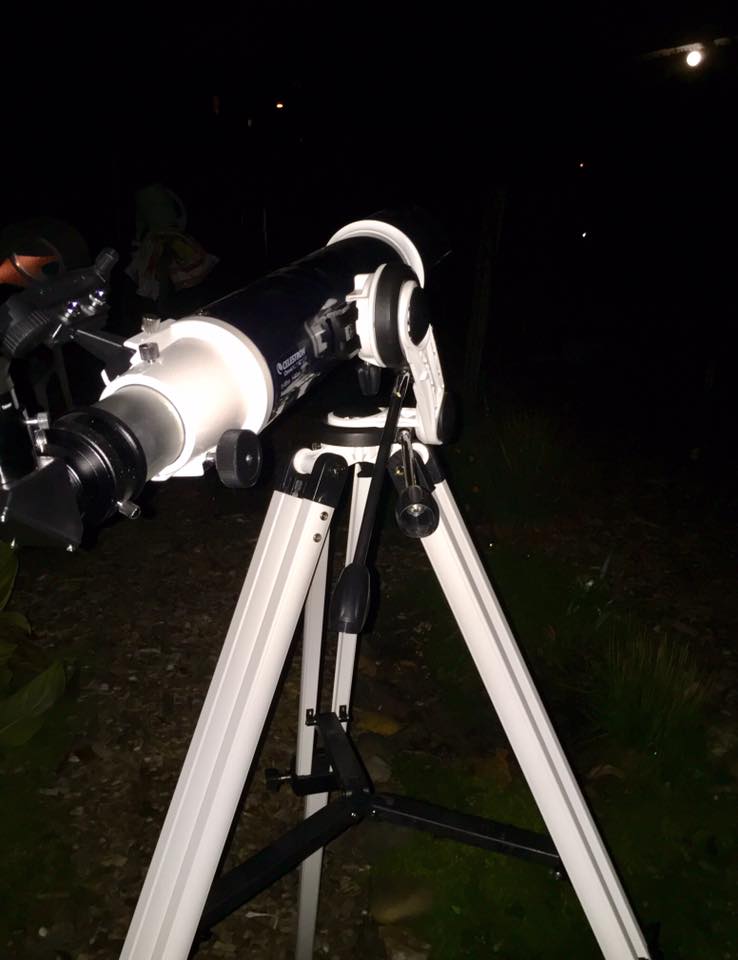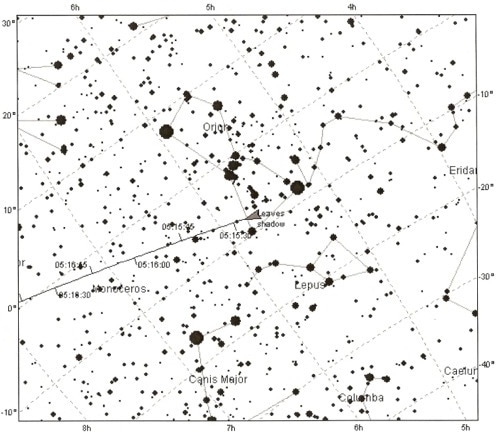|
After a hot, clear day that lacked the crushing humidity I've come to associate with DC summers, I decided to take out my new 4-inch, Celestron Omni XLT refractor. Mars was just a few months from its opposition - its closest point to Earth - and it was fairly high in the sky. Saturn was close to the horizon, but still easily visible. I'd say seeing was around a III, and the transparency of the sky was around 2-3, owing to all the light pollution we have down here. I set up my telescope in front a few apartment buildings, on a grassy knoll below an opening in the trees.
I started with Saturn. With a 25 mm eyepiece, my magnification was around 26x. I could clearly make out Saturn's rings and at least three of its moons, but little else. I plugged in a barlow lens and a 7 mm eyepiece. That increased my magnification to 133x. Now, the view was magnificent. Not only did I clearly discern the Cassini Division - a gap in Saturn's rings about as wide as the United States - but I also spotted a mottled grey cloud belt near the planet's equator. It was, by far, the best view of Saturn that I've ever had. Next, I turned to Mars. By late August, the apparent diameter of the planet was around 11 arc seconds: roughly half as big as it gets near its opposition, but well over twice the size it will be in January. Using the same eyepiece, lens, and magnification, I clearly made out the planet's gibbous, waxing disk. As I watched, the atmosphere above me stabilized and a dark surface feature on Mars shimmered into view. It was very indistinct on the little globe, but definitely there. After about half an hour, Washington's resident Asian Tiger mosquitoes found a way through my repellent. I got a few last glimpses of Mars before they hounded me inside. Overall, this was one of the best observing sessions I've ever had. Until now, I'd never (clearly) identified the Cassini Division, or made out dark patches on Mars. I distinctly remember eying Mars with a 12-inch reflector I used to own, and seeing nothing more than a boiling red ball. The optical quality of my little refractor really impressed me. I didn't notice any chromatic abberation, not even on bright Mars. Everything else is a little sketchy, however. The diagonal was a child's toy, so I quickly replaced it with something better. The focuser isn't much better, and I can't afford to update that. The mount is also a bit wobbly. It's light, at least, but it's awkward and therefore surprisingly difficult to carry. Summer observing in Washington can be hard, given the heat and mosquitoes, but I'm glad I stepped out tonight.
0 Comments
Leave a Reply. |
Archives
March 2024
Categories
All
|




 RSS Feed
RSS Feed